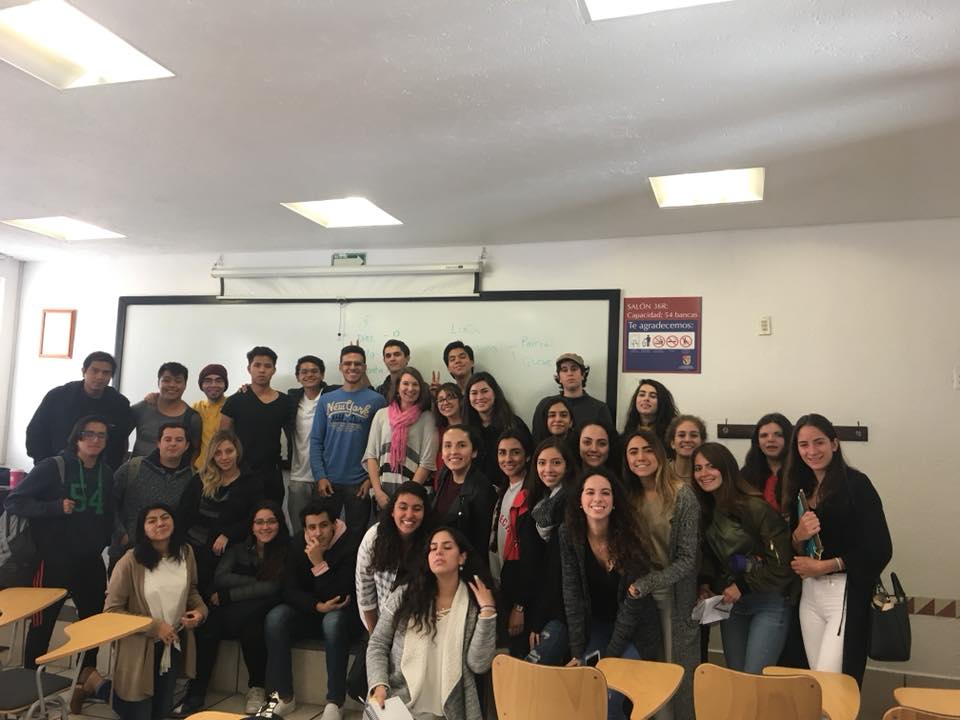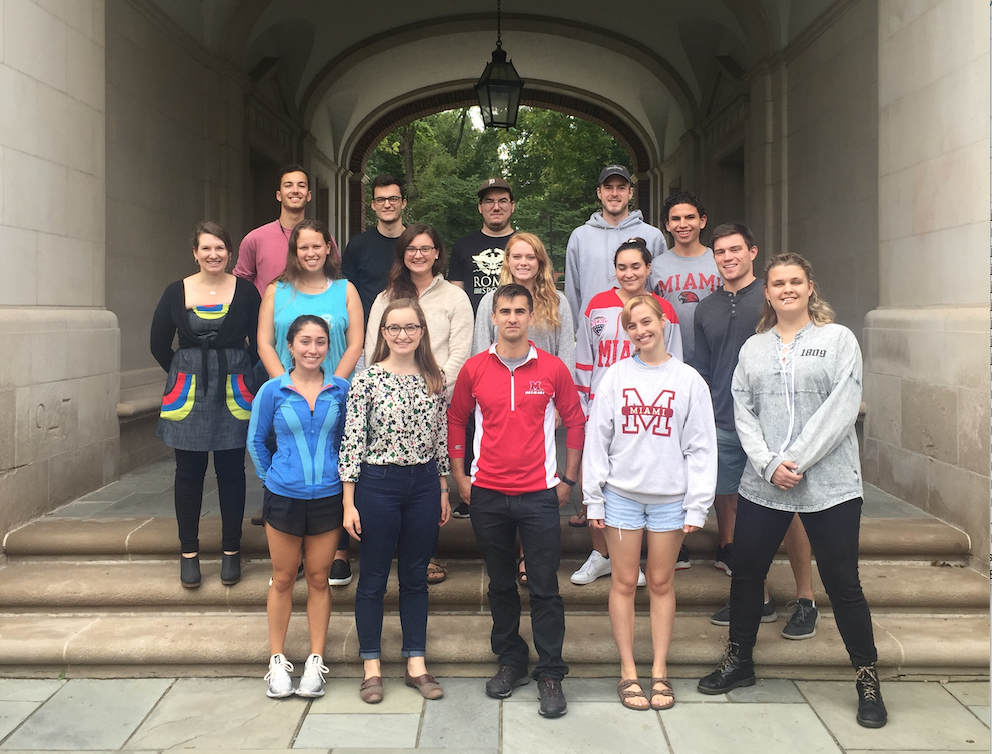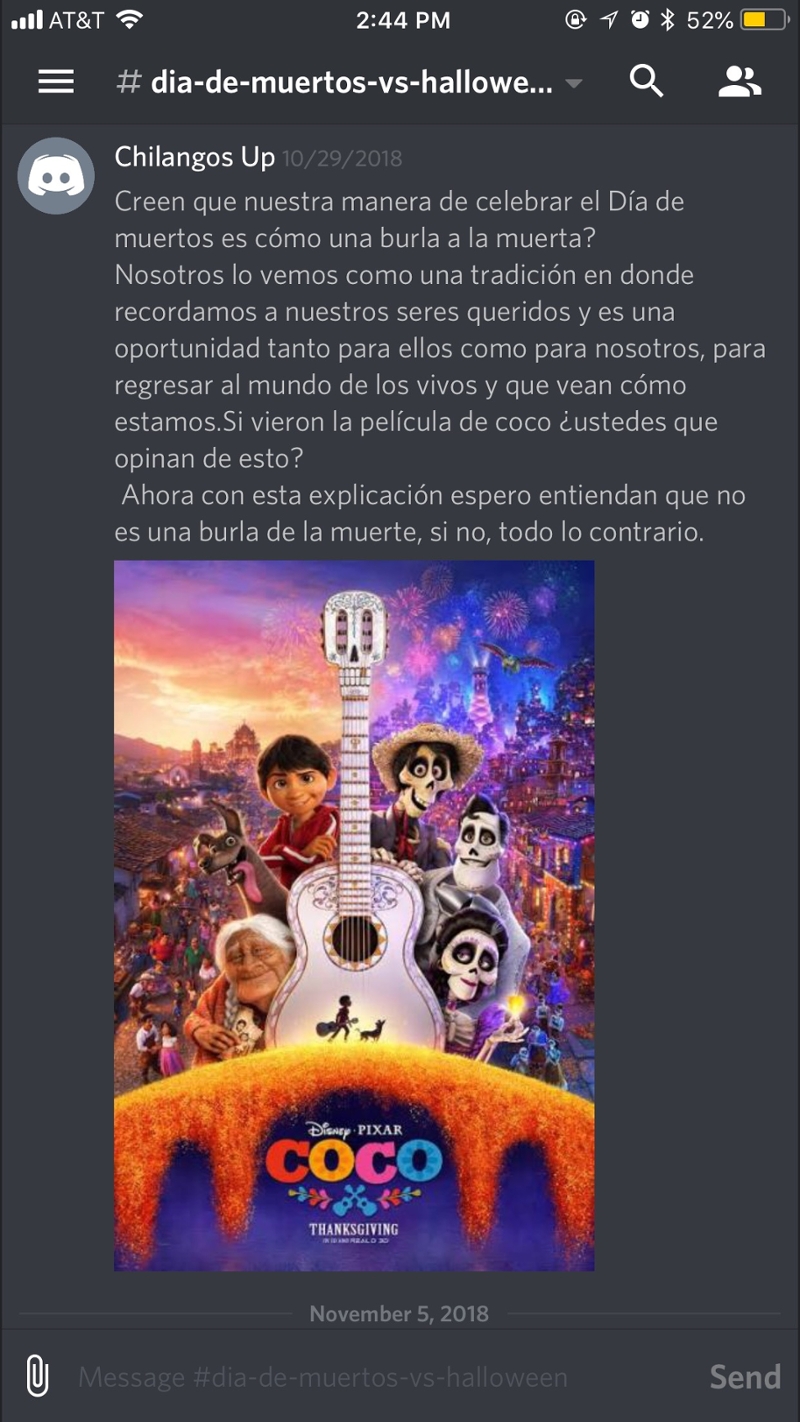
Mexican history class looks for learning on the other side of the border
Elena Albarrán (far left) with her Mexican history class (photo courtesy of Elena Albarrán).
by Shavon Anderson, university news and communications
As Elena Albarrán walks into her Upham Hall classroom, there’s already chatter among the group inside.
Albarrán, associate professor of history and global and intercultural studies, listens as a student asks if her peers have seen pictures — hundreds of Central American families migrating toward the U.S. Others chime in, seamlessly flowing into the day’s lecture before Albarrán even says a word.
In this Mexican history course, these are continuous, relevant conversations. From food and heritage, the Mexican-American War and Cinco de Mayo, ongoing lessons include drug cartels, popular culture, NAFTA and President Donald Trump’s calls for a border wall. There’s no shortage of current events to tie in, and her students have endless questions.
But, for some of the semester’s lectures, Albarrán directs questions 2,000 miles away, leaving the answers to a group of students at the Universidad Panamericana in Mexico City.
Sonia Robles, assistant professor in the school of communications at UP, teaches a corresponding course. Starting this semester, both classes are coordinating a bilingual exchange on the gaming platform Discord, where students can post and reply about anything related to history and the current climate between the U.S. and its southern neighbor.
“Given the heightened political attention to Mexico in the recent year or so, I wanted my students to be able to critically engage with the historical roots of our current news cycle and also to bounce the official narratives off of their counterparts in Mexico,” Albarran said.
The format gives students on both sides of the border an authentic reflection and appreciation on specific
“Someone’s actively doing something every week,” she said. “It’s just a better understanding of their thoughts and opinions on the same things we think about.”

Elena Albarrán (pink scarf) joins Sonia Robles' communications class at Universidad Panamericana during Albarran's recent trip to Mexico City (photo by Sonia Robles).
A one-dimensional view
In life, much of reality is created by perception. In this class, perception is the problem. Albarran says Miami students’ knowledge of Mexican history is one-dimensional and limited, partly due to media and news coverage.
Robles’ students are in a similar situation.
“Before August, most, if not all of them, had not read English-language historical accounts about their country and its past,” she said.
Exposing the unknown is the point. Dissecting differences is the purpose. Possibly the most eye-opening moment in the course came from a poll where Albarrán asked both Mexican and Miami students questions geared toward the Mexican revolution, including who students were most sympathetic to.
Miami students leaned toward revolutionary leader Emiliano Zapata, while the Mexican students preferred Porfirio Díaz, the long-term dictator that the revolution was working to overthrow.
An image showing the Discord platform. This post from a Mexican student questions their Miami counterparts about the Disney Pixar movie 'Coco' and attitudes surrounding how death is represented in their respective cultures.
“The fact that the Mexican students selected the former dictator as the greatest hero of the time period suggests a political trend toward conservatism among the younger generations that is relatively new,” Albarrán said.
The results emphasize the need for Miami students to connect with how Mexico has changed and understand what its current generation is experiencing. One of Robles’ students, Isabel Ignacio, calls the course “dynamic,” especially seeing how the U.S. views her country.
“What we've noticed and realized is that they don't have a clear idea of what actually happens here,” Ignacio said.
While certain positions are
“They’re replicating the rhetoric that we hear at our border, but at the same time, the Mexican students ask if Americans think they’re all criminals and illegal,” she said.
Recognizing that pop culture, media and music heavily influence
Question everything
Whether students know it or not, the exchange is quietly positioning them as independent thinkers, specifically when it comes to international relations.
“I want them to question every narrative that they’re given, including the one that I designed the course around,” Albarrán said.

Sonia Robles and Elena Albarrán enjoy a meal during Albarrán's trip to Mexico City (photo courtesy of Elena Albarrán).
Robles told her students they would study their own history through the lens of Mexican scholars and historians, as well as U.S. academics.
“I hope (the exchange) will help students challenge some of the stereotypes they have about other nations,” she said.
Both professors are working to develop a product out of the course, possibly a podcast or short video. Though the classes meet at different times, they’re set to have a live video chat later this month.


